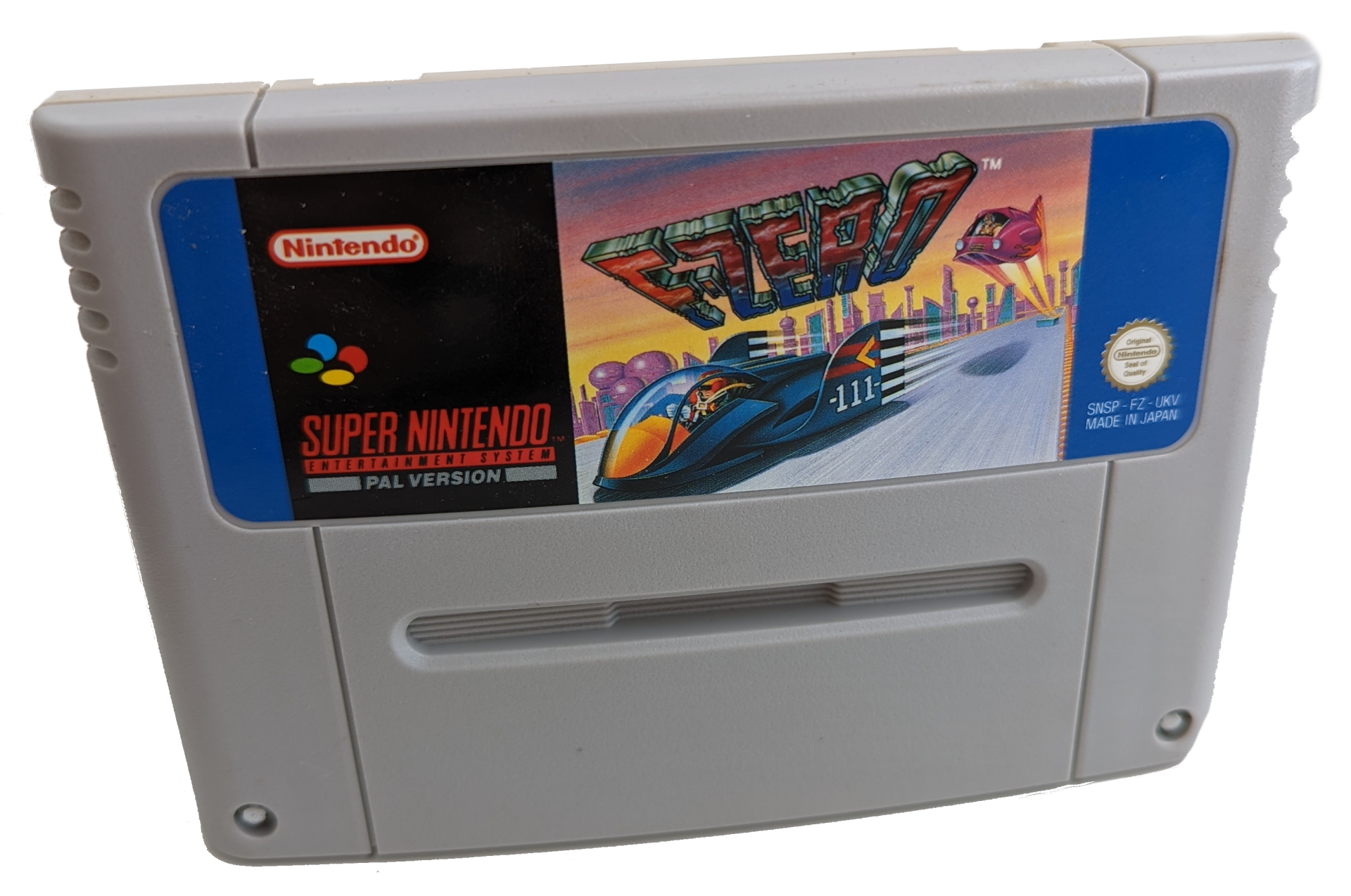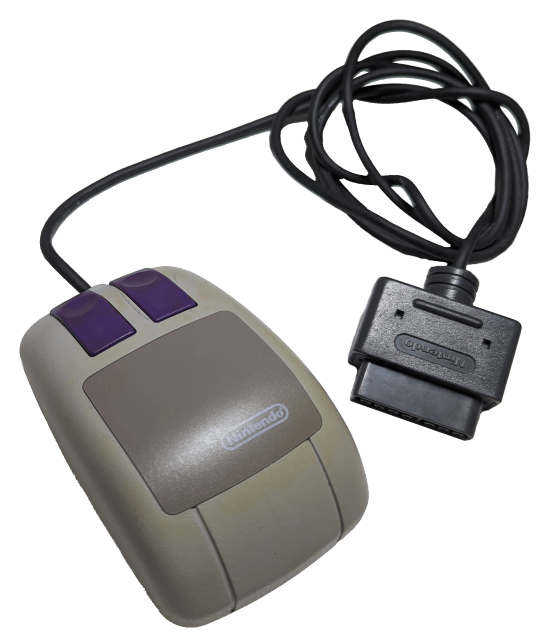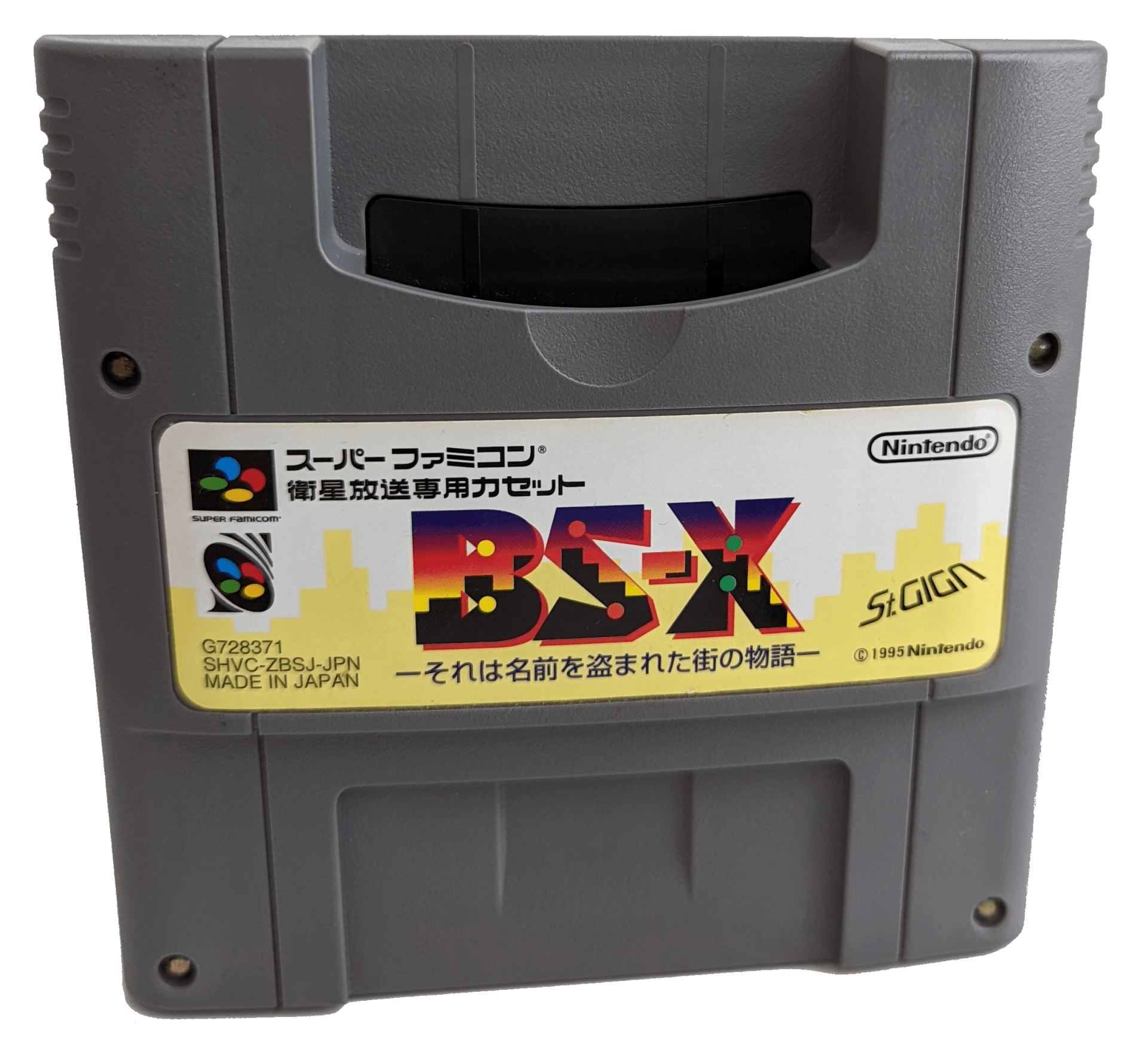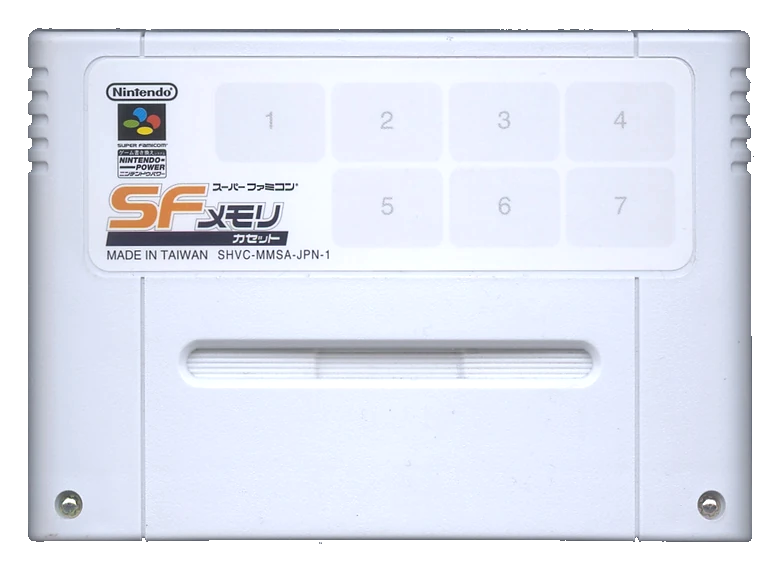Welcome to Luckless Heaven! This website is (soon to be) the biggest encyclopedia for Nintendo-related information on the Internet. Currently under construction.
Note: Super NES hardware does not have a consistent hardware abbreviation across regions.
Japanese Super Famicom hardware uses SHVC, American Super NES hardware uses SNS, Korean Super Comboy hardware uses SNSN and European Super NES hardware uses SNSP.
SHVC-001, SNS-001, SNSN-001, SNSP-001
Super Famicom / Super NES / Super Comboy
The Super NES is a 16-bit console, developed as the successor of the original NES. This console was released as the Super Famicom in Japan, in line with their version of the NES, the Famicom. Similarly, the console is called the Super Comboy in South Korea, in line with their version of the NES, the Comboy, which was manufactured by Hyundai. Interestingly, the console's overall design is consistent in all regions but America, with their Super NES having a more angular, indigo design. Nintendo originally planned for there to be compatibility with original NES/Famicom games, either built-in to the console or via an adapter. However, this feature was scrapped.
SNS-002, SNSN-002
AC Adapter
This AC adapter is included with the main console in America and South Korea only. In Japan and Europe, the Super Famicom and Super NES were packaged with HVC-002/SNSP-002, which are the AC Adapters made for and packaged with the original Famicom and NES, as both consoles use the same port for power input.
SNSP-003
RF Switch
The RF Switch is a converter that allows the Super NES to use a RF display cable to connect to a television, as the console does not have a direct RF port, only a proprietary AV port. The RF Switch was essential for older televisions that had no better video inputs than RF. This peripheral is also compatible with the Nintendo 64 and the Nintendo GameCube, though it seems to have only been released in Europe, packaged with the Super NES. The American Super NES was instead packaged with the original NES RF Switch (NES-003) and the Japanese Super Famicom was sold without display cables, as many people already owned original Famicoms and were expected to have display cables already.
SHVC-004, SNS-004, SNSP-004
Unidentified
SHVC-005, SNS-005, SNSN-005, SNSP-005
Controller
The controller is, nowadays, a fairly standard design, with four face buttons, two should buttons, a couple smaller face buttons for Start/Select and a d-pad. All this was a large improvement over the original Famicom/NES simplistic controllers, which were simplistic to a detriment a lot of the time. While the controllers have different coloured face buttons in most regions to matching the multicoloured logo on the actual console, the American Super NES controller had the buttons coloured in indigo and purple, matching the radically different design of the American console.
SHVC-006, SNS-006, SNSN-006, SNSP-006
Cartridge
A cartridge that contains Super Famicom or Super NES software and games, these are inserted into the slot on top of the console. While the Japanese Super Famicom and European Super NES cartridges share the same curved design, they cannot be used with the other region's console, as there is region-locking built into the console. The American Super NES cartridges are much more angular and boxy, matching the American console's more angular design. These cartridges cannot be physically inserted in Japanese or European consoles, though Japanese and American cartridges are technically compatible with the other region's console if the outer cartridge shell is swapped, allowing them to be inserted. The European console's built-in region-locking will prevent American cartridges from working, even if the outer cartridge shell is swapped, and vice versa.
SNSP-006(-01)
It's unknown what is different about this cartridge compared to the original model. It seems to be exclusive to Europe.
SNSP-006(-02)
It's unknown what is different about this cartridge compared to the original model. It seems to be exclusive to Europe.
SNSP-006(-03)
It's unknown what is different about this cartridge compared to the original model. It seems to be exclusive to Europe, and seems to be associated with games that have enhancement chips, such as the Super FX chip, the Super FX 2 chip and the SA-1 chip.
(If anyone is able to definitively figure out what defines these particular models, please let me know, as it doesn't appear to be linked to battery saves, enhancement chips, SRAM, or CIC chips)
SHVC-007
Mono AV Cable
The Mono AV cables are for outputting audio and video to a television. These AV cables are general mono composite type cables with yellow and white pins. These cables were sold separately, exclusively in Japan, and are compatible with the AV Famicom, Nintendo 64 and Nintendo GameCube.
SHVC-008, SNSP-008
Stereo AV Cable
The Stereo AV cables are for outputting audio and video to a television. These AV cables are general stereo composite type cables with yellow, white and red pins. These cables were sold separately, and are compatible with the AV Famicom, Nintendo 64 and Nintendo GameCube.
SHVC-009, SNS-009
S-Video (SVHS) Cables
The S-Video cables are for outputting stereo audio and video to a television. The video output is higher quality than what you'd get from the Mono and Stereo AV cables, however, these cables will only work on televisions with S-Video ports. These cables were sold separately, and are compatible with the Nintendo 64 and Nintendo GameCube.
SHVC-010
RGB SCART Cable
The RGB SCART cable is for outputting stereo audio and video to a television. It's capable of outputting high quality video, possibly the best video quality available for the Super Famicom. However, this cable will only work on televisions with a SCART port. This cable was sold separately in Japan only; despite looking identical to European SCART leads, this cable has pins that output different signals, and is more commonly known as RGB21, or JP21 in the West.
SHVC-012, SNS-012, SNSP-012
Unidentified
SHVC-013, SNS-013, SNSP-013
Super Scope
The Super Scope is an infrared wireless controller in the shape of a bazooka, held on the shoulder using the large plastic grip, with the user looking into the scope with one eye and aiming down the middle. The FIRE button (coloured red for Japan and Europe, coloured purple for America) is used to fire bullets and select items; there's also a PAUSE button and a switch that turns the Super Scope off, or between regular fire and turbo fire. The Super Scope requires 6 AA batteries to be used, along with the accompanying Infrared Receiver. Due to how the Super Scope detects hits, it is unusable with modern televisions and requires a CRT TV to function properly.
SNSP-015
Euro Connector Plug
The Euro Connector plug connects to the stereo AV cables and outputs stereo audio and video to a television via RGB SCART. However, it doesn't seem to upgrade the video quality of the stereo AV cables, and seems to just be for people with limited AV ports. This connector plug will only work on televisions with a SCART port. This plug was sold separately in Europe only, and is specifically European SCART, not JP21 like the RGB SCART cable (SHVC-010). A white variant was packaged in with European Wii consoles.
SNS-016, SNS-016E
Mouse
The Super NES Mouse is a classic two-button ball mouse, that connects to the Super NES console via the controller port. It was bundled with "Mario Paint" along with the accompanying mouse pad. The only other game that absolutely requires the Super NES Mouse is "Mario & Wario", though there are several games that can use both a normal controller or the Mouse controller, such as the "Famicom Detective Club" games. The Mouse controller was released worldwide, though model number SNS-016 is used in every region, possibly because the controller is region-free and can be used with any Super Famicom or Super NES console. As a remnant of this, every Mouse controller has purple buttons, similar to the colour scheme of the American Super NES.
SHVC-018, SNS-018, SNSP-018
Unidentified
SHVC-019, SNS-019, SNSP-019
Unidentified
SHVC-020, SNS-020, SNSP-020
Unidentified
SHVC-021, SNS-021, SNSP-021
Unidentified
SHVC-022, SNS-022, SNSP-022
Unidentified
SHVC-023, SNS-023, SNSP-023
Unidentified
SHVC-024, SNS-024, SNSP-024
Unidentified
SHVC-025, SNS-025, SNSP-025
Unidentified
SNSP-026
Score Master Arcade Joystick
The Score Master Arcade Joystick is a desktop arcade stick intended to be used with genres more commonly associated with arcade setups, such as fighting games and shoot-em-ups. It has all the same buttons as a standard Super NES controller, though rather than having face and shoulder buttons, all buttons have been made much larger face buttons, and the D-pad has been replaced with a joystick, resembling the usual arcade control panel setup. This controller also features turbo switches for each button, allow for quick successive presses of an individual button, without physically needing to tap the button repeatedly. There's also a "slow mode" switch with two speeds. This slow effect is achieved by simply having the Start button on turbo mode, repeatedly pausing and unpausing the game to achieve a slowed-down gameplay experience. This controller was only released in Europe, for unknown reasons.
SHVC-027, SNS-027, SNSP-027
Super Game Boy
The Super Game Boy allows for Game Boy games to be played via a Super Famicom or Super NES console. The peripheral was released as an answer to players who wanted to play Game Boy games on a better screen, as the Game Boy's screen lacked a backlight and was notoriously difficult to play with at times. This peripheral was released before the Game Boy Color, and as such, games that are only compatible with the Game Boy Color cannot be played with this peripheral. Game Boy Color cartridges that are compatible with the original Game Boy (usually indicated with a black cartridge) are compatible with the Super Game Boy. This peripheral was released in every region, but due to differing cartridge slot designs, the American version differs in design.
SHVC-029
Satellaview
The Satellaview is an add-on for the Super Famicom, that allowed the console to tune into digital radio broadcasts, allowing for new games to be broadcasted directly to the console. This eliminated the need for companies to sell individual physical games and allowed developers to implement advanced features like full voice acting and video cutscenes in their games. This peripheral was only released in Japan via mail order. This was primarily because the Satellaview required digital radio broadcasts, which Nintendo was easily able to afford within Japan due to the stake they held in St.GIGA, a Japanese radio broadcast company that was falling on hard times around 1994. Releasing the peripheral outside of Japan would have required Nintendo to strike deals with digital radio stations across the world; a pricey endeavour. The peripheral was eventually discontinued in mid-2000, after St.GIGA refused a budget-management plan from Nintendo, causing Nintendo to halt production of any new games or software for the peripheral.
SHVC-030
Satellaview AV Selector
The AV Selector is a required part of the Satellaview's setup. The right side of the AV Selector has a single power port, which is used to power the Super Famicom, the Satellaview add-on and the AV Selector itself. The top side of the AV Selector has a wire for dividing satellite data, if the user wants to use another device that requires satellite data, such as a digital TV box, and four ports; three ports for the audio and video that the satellite tuner is outputting and another port for the satellite data it's outputting. The bottom side of the AV Selector has a pair of wires that send power and satellite data to the Satellaview, and three ports for the audio and video that the Super Famicom is outputting. Finally, the left side has a set of standard AV cables to send the combined audio and video from the Super Famicom and the satellite tuner to the TV set. This accessory is what helps make voice acting and video cutscenes possible for the Super Famicom. For a simple diagram of the Satellaview's setup, please click here. This peripheral came with the Satellaview mail order package.
SHVC-031
Satellaview 8Mb Memory Pack
The 8Mb Memory Pack is a memory pack that slots into the top of the Satellaview Cartridge, and stores any videogame or software data that has been broadcast to the Satellaview add-on. The memory pack only stores 8 megabits, equalling 1MB. These memory packs nowadays are the only medium in which Satellaview games and software still exist. Since Satellaview games were only broadcast, rather than being released as physical games, and due to being broadcast during a time when videogame preservation wasn't a huge concern, many Satellaview games have been lost to time. Some Satellaview games, however, have been found still existing on 8Mbit memory packs. This peripheral came with the Satellaview mail order package.
Note: Please do not try to archive Satellaview games by yourself, as attempting to use the memory packs nowadays can wipe any data saved to it. Please try to consult a professional videogame archivist.
SHVC-032
Satellaview AC Adapter
The Satellaview AC Adapter supplies power to the Super Famicom, the Satellaview add-on and the AV Selector. This AC adapter plugs into the AV Selector, which then sends power to the Satellaview power via the power wire on the bottom side. This peripheral came with the Satellaview mail order package.
SHVC-033
Satellaview Power Supply Relay Box
The Satellaview Power Supply Relay Box is a small plastic connector that plugs into the power ports of the Super Famicom and the Satellaview add-on. This plastic connector allows for power to be shared between the Super Famicom and Satellaview add-on, so that both can be powered by a single AC adapter, allowing for slightly easier cable management. This peripheral came with the Satellaview mail order package.
SHVC-034, SNS-034, SNSP-034
Unidentified
SHVC-035, SNS-035, SNSP-035
Unidentified
SHVC-036, SNS-036, SNSP-036
Unidentified
SHVC-037, SNS-037, SNSP-037
Unidentified
SHVC-038, SNS-038, SNSP-038
Unidentified
SHVC-039
ROM Pack
The ROM Pack is similar to the 8Mb memory pack, in that it slots in the top of the Satellaview cartridge. However, the ROM pack comes with pre-installed data, and cannot be rewritten. This basically allows for developers to release physical additional content for games that use the Satellaview cartridge. Despite the potential of this idea, this peripheral was only used for one game: "SD Gundam G-NEXT".
SHVC-040
Slotted Cartridge
This slotted cartridge is a standard Super Famicom cartridge with a slot at the top for the 8Mb memory pack (SHVC-031). Data broadcast via the Satellaview service would be written to the 8Mb memory pack, which could then be removed from the Satellaview cartridge and inserted into one of these slotted cartridges. This was used by a few games to run competitions. The pack would add competition data to the game and then record the player's score, which could be sent off to Nintendo when the 8Mb memory pack is placed back into the Satellaview cartridge.
SHVC-041
SF Memory Cartridge
This cartridge is a blank 32Mbit cartridge which could be bought and used with the Nintendo Power service to download games. These cartridges are a bright white colour and often have a generic sticker with 7 squares where smaller stickers can be placed to remind players what games were downloaded onto the cartridge. These games could be rewritten and the service had exclusive games, meaning some games such as the "Picross NP" series are exclusively found on this type of cartridge.
SHVC-042
Super Game Boy 2
The Super Game Boy 2 is an upgrade to the original Super Game Boy, adding a link cable port and communication features, allowing for multiplayer with Game Boy consoles or other Super Game Boy setups. Other slight improvements include a power indicator light, some new borders and accurate speed, as the original Super Game Boy actually played games at a slightly faster rate than a standard Game Boy.
SHVC-101, SNS-101
Super Famicom/Super NES Jr.
The Super NES Jr. (released as the Super Famicom Jr. in Japan) is a downsized variant and later model of the Super NES. It has the same power port and AV port as the original model, but lacks the expansion port on the bottom, meaning that this model is not compatible with the Satellaview add-on. This model is identical otherwise, and is intended as a budget option for people looking to buy a Super NES.
SNS-102
Super Famicom/Super NES Jr. Controller
The Super NES Jr. Controller is a variant of the Super NES controller that was released and packaged with the Super NES Jr.. There's almost no discernible difference between this controller and the original model, except that there's an embossed Nintendo logo instead of the printed Super Famicom/Super NES logo and that the cable is now twice as long. The model number is the same in both America and Japan, though the face buttons differ the same as the original controller.



































